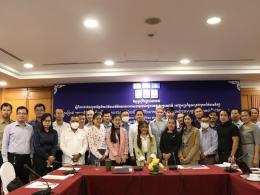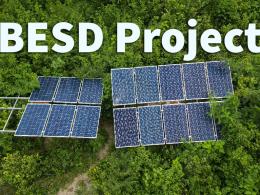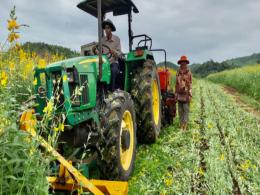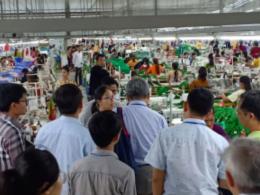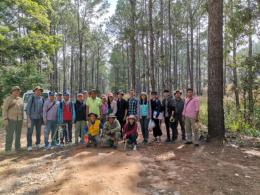Installation of Demonstration RAM Pump
Background
At the moment across the agriculture sector in Cambodia, those that irrigate do so by pumping from water sources using in the vast majority diesel pumps, thus generating CO2 emissions through the burning of fossil fuels. The project is to demonstrate replacement of these diesel pumps with hydraulic ram pumps, with a test site at a location in Kompong Seila covering an area of 50 hectares. A move to this low-tech solution that uses only water energy to lift the water will completely eliminate the burning of fossil fuels to irrigate and thus stop this source of CO2 emissions. The technology, self-acting ram pump, is simple, requires low maintenance and this would be the first time it is applied in Cambodia. It is potentially suitable for replication in most areas with surface water. In addition to mitigation benefits, the technology could also contribute to adaptation as (unlike diesel pumps) there is no fuel /running cost, so the pump can be used to lift additional volumes of water compared to diesel pumps.
Overall Objective
Adapt and mitigate the effects of climate change by self-acting ram pump
Specific Objectives
1. Produce and implement the first ram pump system in Cambodia; and
2. Be able to teach this methodology to increase the knowledge level in the agriculture sector, with a more sustainable mind-set.
Approach
Prek Leap National Institute of Agriculture (NIA) propose to use self-acting ram pump and apply it to agriculture, from the university to the farmers. NIA propose an end to end solution, from the water source to the trees, without the use of fossil energy at any stage of the process. This system is an innovation for Cambodia, and one which may be applied to any area where there is a stream of flowing water achieving the required elevation for the technology to work. With a widespread rollout, we estimate that there is more amount of land across Cambodia that this technology may be suitable for.NIA will implement the project in two phases, with first a small-scale demonstration system that will feed into existing infrastructure at the Institute as Phase 1. This will be crucial for a future scale-up as it will be used to train NIA students on the technology, thereby creating a critical mass of staff in the agriculture sector who are familiar with the technology. This will significantly increase the project-reach. Phase 2 will cover the piloting on the demonstration site in Kompong Seila.
Outputs and Key Activities
| Result | Key Activities |
|---|---|
|
|
Knowledge Products
• Thesis • Training materials
| Timeframe | Total Budget | Partners | Location |
|---|---|---|---|
|
12 months |
USD 115,987 (From CCCA US$ 99,987) |
NIA, K-Box Solution | Prek Leap National Institute of Agriculture and Stung Chral, Kompong Seila, Seihanoukville |


